- - - -
Introduction
Introduction
I'm not in any way artistic...but maybe for the next issue you can have photos of my cake decorating and sugarcraft... only if you have an empty corner.
Georgie x
For this second issue of Colouring Outside The Lines as well as compiling interviews with fantastic contemporary female artists, I have been creating a gallery of artwork submitted to me via a call for submissions posted in many locations. The above quote came from a friend of mine in reference to the gallery, and acts as an important reminder of my reasonings behind creating this zine; I wanted to create the space to celebrate, promote, encourage and display a vast array of female creativities, and I wanted to make an active comment about the cultural myth that art is reserved for the elite and privileged. I truly believe that Georgie's cake decorating and sugarcraft is, despite her protests, inherently artistic; I want to help shatter the idea that it's not, and attack a society that teaches us what is and isn't 'art', and regularly teaches women that our creative and artistic contributions are not legitimate or worthwhile, or that we're not 'artistic', or artistic enough. I hope that by collecting together such a wide and varied collection of female artists in this zine it maybe encourages women directly or indirectly to confidently put their ideas into the world and view them as the artistic and creative, and ultimately worthwhile and important acts that they are.
Each and every one of us has the potential to be a creator, to be an artist, and to share our ideas creatively. In fact, as web-artist Natalie Dee once inspiringly claimed in an interview:
'The only thing you have to do to be an artist is make art. Decide what you want to do, and keep on doing it. Don't let anyone tell you what to do, or what is funny, or what is art. Make something you like. There is no such thing as going too far or running something into the ground, or having a crappy idea, just do whatever you want.' (2006)
It is so important to the formation of this zine that it acts as an area for collaborative action. It kind of goes without saying that without the thirteen interviewees in this collection responding to my interviews, and without the teems of artists collected within the 'gallery' submitting their work to me, then this zine would be pretty empty. That these women came together, donated their time, art, and creativity to this project and filled it with such inspirational and motivating ideas and images has allowed their work to act as an important and active contribution to the political debate about the nature and power of female creativity.
Jean Smith, in this zine, talks of how progressive it would be if in society it was allowed and encouraged for all people to create art as part of general wellness and personal & social evolution. In a really small way I hope that this zine can contribute to that important ideal.
I know I mentioned this in the introduction to the first issue of this zine, but I am approaching this art 'thing' from a position of 'amateur', from a position of 'uninitiated'; I didn't study art, I don't speak 'art-speak', and I certainly don't know as much as maybe I should – but that's kind of my point… I am a firm believer in smashing this amateur/expert dichotomy that keeps so many women at a distance from their potential, from expressing their creativity, or from viewing and learning about others'. By involving so many women in this collaborative project it is able to act as a supportive and approachable avenue to celebrate the everyday greatness of art and the women who create it, whilst also hopefully inspiring, encouraging and motivating the creativity and artistry of other women; art doesn't have to be this capital 'A' elitist thing. We don't have to feel inferior, underappreciated, unlearned or excluded; we can all be the experts in and of our own unique creativities - As the women in this collection clearly demonstrate.
Artist and film maker Miranda July was once asked in an interview about her collaborative projects and was posed a question about what drives her to incorporate other people and other's ideas into her work. She was asked:
Jean Smith, in this zine, talks of how progressive it would be if in society it was allowed and encouraged for all people to create art as part of general wellness and personal & social evolution. In a really small way I hope that this zine can contribute to that important ideal.
I know I mentioned this in the introduction to the first issue of this zine, but I am approaching this art 'thing' from a position of 'amateur', from a position of 'uninitiated'; I didn't study art, I don't speak 'art-speak', and I certainly don't know as much as maybe I should – but that's kind of my point… I am a firm believer in smashing this amateur/expert dichotomy that keeps so many women at a distance from their potential, from expressing their creativity, or from viewing and learning about others'. By involving so many women in this collaborative project it is able to act as a supportive and approachable avenue to celebrate the everyday greatness of art and the women who create it, whilst also hopefully inspiring, encouraging and motivating the creativity and artistry of other women; art doesn't have to be this capital 'A' elitist thing. We don't have to feel inferior, underappreciated, unlearned or excluded; we can all be the experts in and of our own unique creativities - As the women in this collection clearly demonstrate.
Artist and film maker Miranda July was once asked in an interview about her collaborative projects and was posed a question about what drives her to incorporate other people and other's ideas into her work. She was asked:
'There's something in those projects ['Joanie 4 Jackie' and 'Learning to Love You More'] that is so much about urging people to take a risk – send us your movie, or here's an assignment, now send it back to us. It's very public. It's not about incorporating these things into your own work, but instead about attaching these people's names to it and presenting their work as their own. What drives you to do that? What drives you to drag people out into the light?' (Punk Planet #71. 2006)
This question, at the time, made me think really hard about just why I was putting this zine together and the potential activist nature of it. I guess I wanted to mine the huge wealth of amazing artistic talent out there, shine a flashlight on it and enable the female creators of it to have a voice over their work, or have this extra avenue in which to display it.
Miranda July responded to the question by explaining that she wanted alternatives to the way that things currently work within 'art' and 'film' systems, and that she didn't always want to have to do things the way they are traditionally or conventionally 'done' - she knew a lot of other people didn't either. Hence she made these collaborative art projects, and created alternative opportunities. Personally, receiving emails from artists thanking me for providing the space to show their work, or hearing from other women and artists who have had ideas for similar projects to Colouring Outside The Lines tells me all I need to hear about how other women want alternatives to the ways art is explored or displayed, or 'done', and why, even when putting this zine together was driving me crazy, I knew I had to stick with it and keep going – because it became too important to stop. Jen Smith, in 1997, wrote that:
Miranda July responded to the question by explaining that she wanted alternatives to the way that things currently work within 'art' and 'film' systems, and that she didn't always want to have to do things the way they are traditionally or conventionally 'done' - she knew a lot of other people didn't either. Hence she made these collaborative art projects, and created alternative opportunities. Personally, receiving emails from artists thanking me for providing the space to show their work, or hearing from other women and artists who have had ideas for similar projects to Colouring Outside The Lines tells me all I need to hear about how other women want alternatives to the ways art is explored or displayed, or 'done', and why, even when putting this zine together was driving me crazy, I knew I had to stick with it and keep going – because it became too important to stop. Jen Smith, in 1997, wrote that:
'By using different and immediate ways of showing and sharing our art, we are often intimately involved with our creative and commodification processes. The ways we exercise our ideas, our art, and our livelihoods are the ways in which we engage in activism.' (In: Doin' It for the Ladies. p238)
And I guess that by creating an immediate held-in-your-hands way of sharing and exhibiting art and artistic thoughts and ideas, this zine brings art and creativity into a very public, yet intimate arena; bringing art into people's lives, encouraging our engagement and participation.
Creating this collaborative project is important to me as I had a strong desire to break down the whole audience/artist thing and actually engage with the interviewees, and in turn allow them to engage with the readers of this zine with their thoughts, ideas and creativities – it's all about the idea that we all have a responsibility to each other; and I guess the strongest responsibility I could see was that of encouragement. Collaboration is encouragement. Collaboration, to me, is also about connecting (to each other and to our own ideas) in positive, confident and supportive ways.
Creating this collaborative project also came from a position of wanting to make a collective culture – all about doing things and looking for things that will speak to us and draw the people we need to us, and importantly creating these opportunities and links for others too: opening up worlds, creating entry points to art, raising consciousness, and encouraging involvement.
The main crux of this zine revolves around the collection of interviews with creators of a wide range of art. These collected interviews credit the ambition and talent of thirteen brilliant women; ambition that Susan Sontag once astutely claimed women are schooled to stifle in themselves, and thus something that became even more important for me to celebrate by collating these interviews together; interviews which emphasise the variety of female artists' lives today, and the ambitious work that they are creating on a day-to-day basis.
In interviewing these women I hope not to have put their work and ideas under scrutiny, but more that I hope to have created avenues for these women's thoughts and ideas to come to the fore; allowing these creators a unique voice over their own work. By structuring my contact with these artists as a conversation, as an interview, I hope not to have excluded the viewer or reader's experience or appreciation of the artwork and notions of 'art', as I do not wish to create a hierarchy between artist and viewer. There is perhaps a fine line between artists speaking of their work, and artists dictating understandings, feelings and experiences of their work. Artist, Camille Rose Garcia, (in Juxtapoz magazine, 2006) claimed that:
Creating this collaborative project is important to me as I had a strong desire to break down the whole audience/artist thing and actually engage with the interviewees, and in turn allow them to engage with the readers of this zine with their thoughts, ideas and creativities – it's all about the idea that we all have a responsibility to each other; and I guess the strongest responsibility I could see was that of encouragement. Collaboration is encouragement. Collaboration, to me, is also about connecting (to each other and to our own ideas) in positive, confident and supportive ways.
Creating this collaborative project also came from a position of wanting to make a collective culture – all about doing things and looking for things that will speak to us and draw the people we need to us, and importantly creating these opportunities and links for others too: opening up worlds, creating entry points to art, raising consciousness, and encouraging involvement.
The main crux of this zine revolves around the collection of interviews with creators of a wide range of art. These collected interviews credit the ambition and talent of thirteen brilliant women; ambition that Susan Sontag once astutely claimed women are schooled to stifle in themselves, and thus something that became even more important for me to celebrate by collating these interviews together; interviews which emphasise the variety of female artists' lives today, and the ambitious work that they are creating on a day-to-day basis.
In interviewing these women I hope not to have put their work and ideas under scrutiny, but more that I hope to have created avenues for these women's thoughts and ideas to come to the fore; allowing these creators a unique voice over their own work. By structuring my contact with these artists as a conversation, as an interview, I hope not to have excluded the viewer or reader's experience or appreciation of the artwork and notions of 'art', as I do not wish to create a hierarchy between artist and viewer. There is perhaps a fine line between artists speaking of their work, and artists dictating understandings, feelings and experiences of their work. Artist, Camille Rose Garcia, (in Juxtapoz magazine, 2006) claimed that:
'I don't want people to read text next to the painting and say, "Oh, that's what it's about", because what their subconscious mind is doing, or reacting to is pretty interesting and usually right on.'
And it's this idea of audience interaction that I did not want to remove by asking specific, definitive questions of the artists. However, I think it is also really important that women are allowed a voice and agency over their own work, a voice that is so often denied women by conventional art criticism, or a voice that is sometimes wholeheartedly misinterpreted. Allowing the room for women to speak of their work also allows us to maybe gain more of an appreciation of their art, helping us to learn more, and thus feel closer and more aware of these women and their work. bell hooks once claimed that it is a difficult task to determine the value of an artist's life and work 'if one cannot get close enough to feel anything, if one can only stand at a distance' (in: Outlaw Culture, 1994 p28); and it is hoped that in allowing these artists to interact with us via this zine that their work can be appreciated and loved more due to the closeness we can gain.
I hope you enjoy the zine – it's been somewhat of a labour of love, and something I've worked on often obsessively as a way to feel productive whilst living with severe depression. As such it is kind of proof positive that creative projects can happen and be produced by each of us in all of our unique and individual ways, regardless of, and often as a challenge to our own (perceived or realistic) limitations. Each and every one of us has the potential to be a creator, to be an artist, and to share our ideas creatively, and as Nomy Lamm once said:
'Nobody may like your art. But only by channelling your passion will you
ever know what might be possible.'
Melanie Maddison.
August 2006.
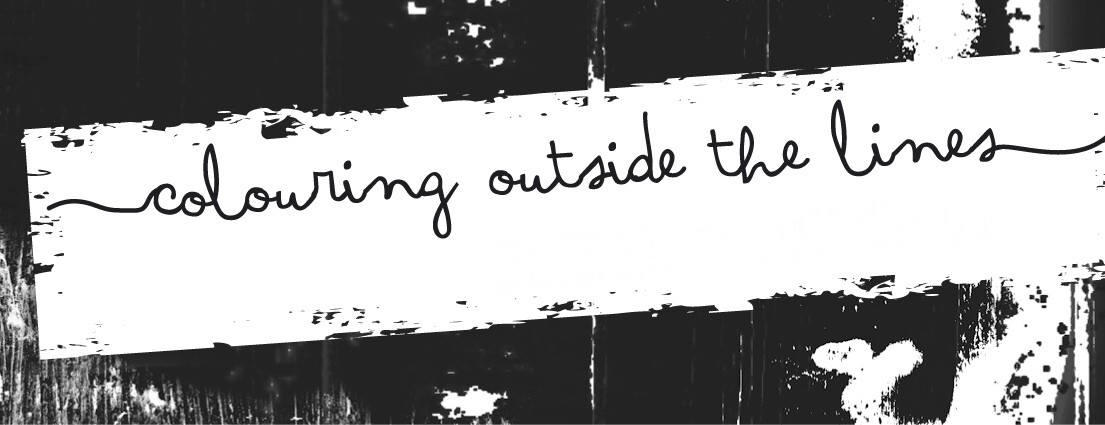





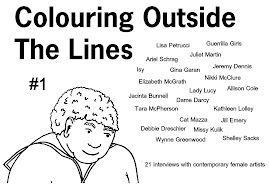
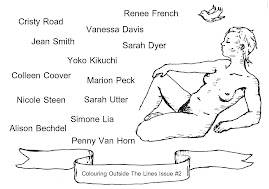

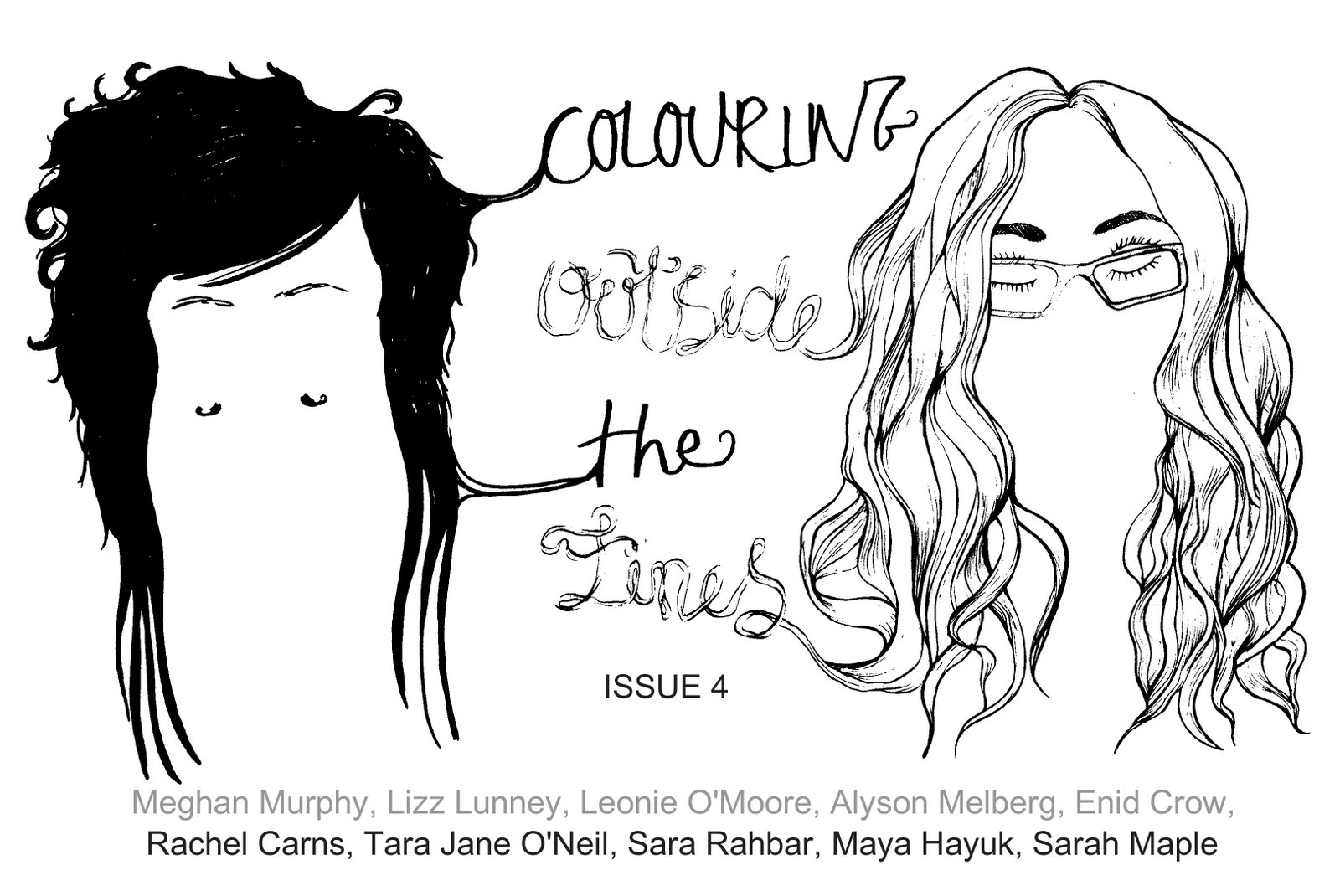

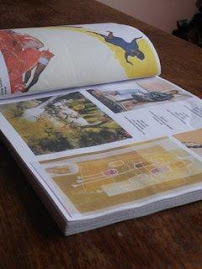



No comments:
Post a Comment